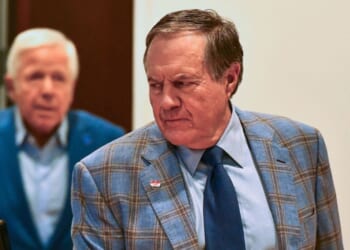
A ban on small high-powered magnets would be the most effective way to stop children from swallowing them, according to a new study by U.S.-based researchers.
Currently, between 500 and 2,000 U.S. kids swallow magnets each year. Children under the age of 14 make up the majority of those cases according to the study, published in the journal Injury Prevention Tuesday.
Ingesting magnets can cause serious health issues if they get stuck or move within the body, including “clumping, gastrointestinal blockage, perforation, and other acute injuries to the gastrointestinal tract,” according to the American Medical Association.
The University of California, Davis scientists contended that the small magnets in question should be removed from the open market entirely.
“Removal of magnets from the market is linked to a decreased incidence of injuries related to magnet ingestions and thus, such policies should be proposed, promoted and enforced,” they wrote.
The researchers said that prior U.S. restrictions and bans worked. From 2012 to 2017, the average number of magnet ingestions by children each year dropped by 33%, with a ban on the sale of small, high-powered magnets in place from 2014 until the ban was repealed in 2016.
The number of magnet swallowing also went down in neighboring Canada once their authorities put restrictions on the sale of high-powered sets of small magnets.
From 2017 following the repeal until new Consumer Product Safety Commission regulations were put in place in 2022, the number of annual U.S. cases where kids swallowed magnets ballooned by 444%, the researchers said.
Under the 2022 policy, magnets either have to be too large to swallow or too weak to cause internal injuries if they are swallowed. The policy affects a variety of stress relief, mental stimulation, entertainment and jewelry products, while toys for kids under 14 are governed by a separate standard.
The CPSC standard for toys mandates that small loose magnets and magnetic components that can become loose through use have a magnetic flux of 50 or less, the agency explains on its website.
Magnetic flux is the average magnetic field a magnet produces times the area it penetrates perpendicularly, according to the American Medical Association.












